Responsibilities for the Aircraft Refueller include pressure and non-pressure refueling using a variety of sources, such as mobile tankers, hydrant carts, cabinets and drums. In some organizations, Aircraft Refuellers are called upon to operate tank farms, and as such, a block has been included in this occupational standard to reflect these additional duties.
Aircraft Refuellers may also be called upon to perform special refueling procedures, de-fuel aircraft and respond to fuel spills and other environmental concerns. They are thoroughly familiar with safe work practices, and rules and regulations that apply to their work.
Certification Requirements
Aircraft Refuellers may specialize in Pressure and/or Non-Pressure refueling. Applicants seeking certification in Pressure refueling are required to demonstrate experience with at least three (3) types of aircraft.
Applicants seeking certification in Non-Pressure refueling must have experience with at least two (2) different types of aircraft.
Applicants must also complete mandatory tasks for one of the following sources:
- Refueling from Tankers
- Refueling from Hydrants
- Refueling from Cabinets
- Refueling from Drums
In addition, all applicants must acquire a minimum of twelve (12) months experience in the occupation, based on full-time employment.
The tasks in the logbook were made as generic as possible to accommodate the largest amount of work environments and equipment / tools but do not necessarily cover all tasks performed by individuals.
Tasks Common to Most Aircraft Refuellers
(note that sub-tasks for each task are not shown below)
Block A — Safety
Task 1 – Demonstrate Safe Working Practices and Techniques
Block B — Emergency and Environmental Procedures
Task 2 – Demonstrate Fire Prevention and Response Procedures
Task 3 – Demonstrate Spill Control
Task 4 – Dispose of Fuel Safely
Block C — Flightline and General Knowledge
Task 5 – Observe Security Procedures
Task 6 – Execute Flightline Procedures
Task 7 – Use Fuelling Equipment
Task 8 – Communicate Effectively
Block D — Aircraft-Specific Knowledge
Task 9 – Operate Fuelling Systems on Different Types of Aircraft
Block E — Laws, Regulations, Policies and Standard operating Procedures
Task 10 – Abide by Laws, Regulations, Policies and Standard Operating Procedures
Block F — Vehicle Operation
Task 11 – Ensure Safe Operation of Vehicles and Equipment
Block G — Tank Farm
Task 12 – Perform Fuel Farm Inspections
Task 13 – Perform Capacity Checks
Task 14 – Check Fuel Quality from Transporters
Task 15 – Receive Fuel
Task 16 – Issue Fuel
Block H — Fuel Quality Checks
Task 17 – Check Fuel Quality Using Standard Tests
Block I — Refueling
Task 18 – Prepare for Refueling
Task 19 – Refuel Aircraft from Mobile Tanker
Task 20 – Refuel Aircraft from Hydrant
Task 21 – Refuel Aircraft from Cabinet
Task 22 – Refuel Aircraft from Drums
Task 23 – Refuel Aircraft at Remote or Deployed Areas
Block J — De-fueling
Task 24 – Perform De-fueling Procedures
Task 25 – Perform Special Fuelling Procedures
Task 26 – Maintain Records
